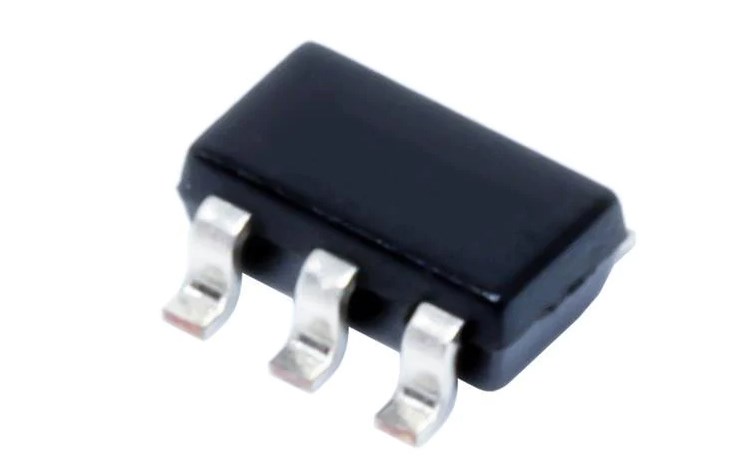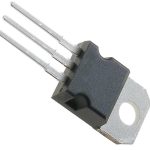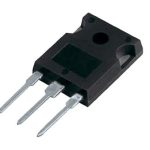The REG101 voltage regulator is a versatile and efficient solution for low-power applications that require a stable and regulated output voltage. In this blog, we will explore the features and practical tips for using the REG101. Whether you are an electronics enthusiast or a professional designer, understanding the REG101 will empower you to create robust and reliable circuits.
What is REG 101 voltage regulator?
REG 101 is a type of voltage regulator that is commonly used in electronic circuits to maintain a stable and constant output voltage regardless of changes in the input voltage or load conditions. It is a compact and versatile device that helps regulate and stabilize voltage levels in various electronic systems.
How does REG 101 work?
REG 101 works by comparing the actual output voltage with a reference voltage and making necessary adjustments to maintain a constant output voltage. It consists of a feedback control loop that continuously monitors the output voltage and adjusts the voltage regulation circuit accordingly. This feedback mechanism ensures that the output voltage remains within a specified range, even if there are fluctuations in the input voltage or changes in the load.
What is REG 101 used for?
REG 101 is widely used in various electronic devices and systems where a stable and reliable power supply is crucial. Some common applications include:
- Power supplies: REG 101 is often used in power supply units to ensure a steady output voltage, preventing damage to sensitive components.
- Automotive electronics: It is used in automotive systems such as engine control units (ECUs) and infotainment systems to provide regulated voltage to different components.
- Communication equipment: REG 101 helps maintain a stable voltage in communication devices like routers, modems, and wireless transceivers.
- Industrial automation: It is used in industrial control systems to regulate voltages for sensors, actuators, and other components.
- Consumer electronics: REG 101 is found in various consumer electronics such as smartphones, laptops, televisions, and audio devices to ensure consistent power delivery.
Features
Some key features of REG 101 voltage regulators include:
- Voltage stability: REG 101 provides excellent voltage regulation, ensuring a stable output voltage even under varying input voltages or load conditions.
- Efficiency: It is designed to be highly efficient, minimizing power loss and heat generation during voltage regulation.
- Protection mechanisms: REG 101 often includes protection features such as overvoltage protection, short-circuit protection, and thermal shutdown to safeguard the circuit and connected devices.
- Compact size: REG 101 regulators are typically compact in size, making them suitable for applications where space is limited.
- Wide input voltage range: They can handle a wide range of input voltages, making them adaptable to different power sources.
Applications
REG 101 voltage regulators find applications in various industries and electronic systems. Some common applications include:
- Power supplies for computer systems, servers, and data centers
- Battery charging circuits in portable devices like smartphones and tablets
- LED lighting systems and displays
- Automotive electronics, including engine control units (ECUs) and infotainment systems
- Industrial automation and control systems
- Audio amplifiers and music equipment
- Medical devices and equipment
- Telecommunication systems and networking devices
These are just a few examples, and the versatility of REG 101 makes it suitable for a wide range of applications that require stable and regulated voltage supply.
PCB symbol and footprint


Datasheet
LM317 vs REG 101
LM317 and REG101 are both voltage regulators, but they have some differences in terms of their features and applications.
The LM317 is a popular linear voltage regulator that provides a regulated output voltage with adjustable values. It has a wide input voltage range and can handle higher currents. The output voltage can be adjusted using two external resistors, making it versatile for various applications. However, the LM317 has a relatively higher dropout voltage, which means the input voltage should be higher than the desired output voltage by a certain amount for proper regulation.
On the other hand, the REG101 is a low-dropout (LDO) voltage regulator specifically designed for low-power applications. It offers a fixed output voltage without the need for external resistors. The REG101 has a lower dropout voltage compared to the LM317, making it suitable for applications where the input voltage is close to the desired output voltage. It also provides better line and load regulation, ensuring a stable output voltage even with varying input conditions.
How to use REG 101?
Using the REG101 voltage regulator is quite straightforward. Here are the basic steps:
Step 1:
Determine the required output voltage for your application. The REG101 comes in different fixed output voltage options, so choose the one that matches your requirements.
Step 2:
Connect the input pin (VIN) of the REG101 to the power source or input voltage. Make sure the input voltage does not exceed the maximum specified limit mentioned in the datasheet.
Step 3:
Connect the output pin (VOUT) of the REG101 to your load or the circuit that requires the regulated voltage.
Step 4:
Connect the ground pin (GND) of the REG101 to the common ground of your circuit.
Step 5:
Add necessary input and output capacitors as recommended in the datasheet to improve stability and reduce noise.
Step 6:
Apply power to the input pin and check the output voltage using a multimeter. Ensure that the measured output voltage matches the desired output voltage.
Tips For the LDO Voltage Regulators “REG 101”
- Ensure that the input voltage does not exceed the maximum specified limit mentioned in the datasheet to prevent damage to the regulator.
- Place input and output capacitors close to the REG101 to minimize noise and improve stability.
- If your application requires higher currents, consider using a heat sink or selecting a different regulator with higher current-handling capabilities.
- Keep the temperature of the REG101 within the specified operating range to ensure proper functionality and longevity.
- Take into account the dropout voltage when choosing the input voltage for the REG101 to ensure reliable regulation.

Conclusion
By all the details of the REG101 voltage regulator, we have uncovered its key features and pratical applications. With its ease of use and high performance, the REG101 proves to be an indispensable component in various low-power electronic designs. Harnessing the power of the REG101 will undoubtedly enhance the efficiency and reliability of your circuits, making it a go-to choice for voltage regulation needs.




